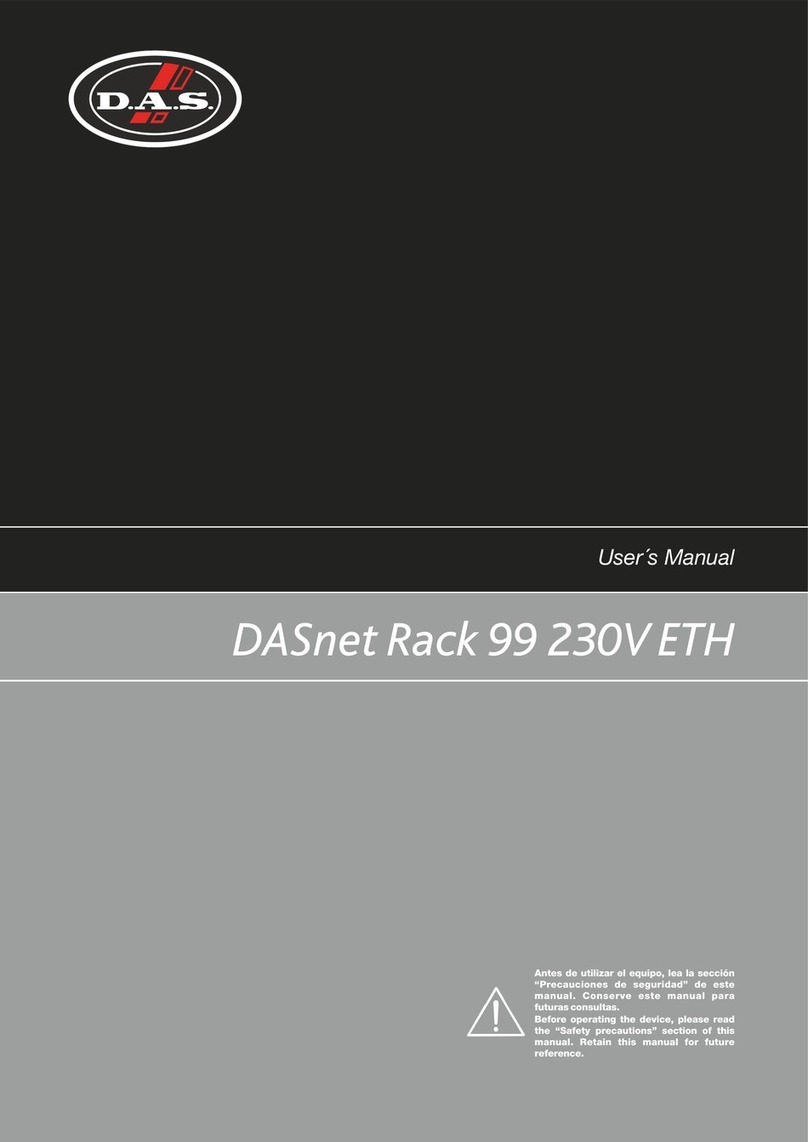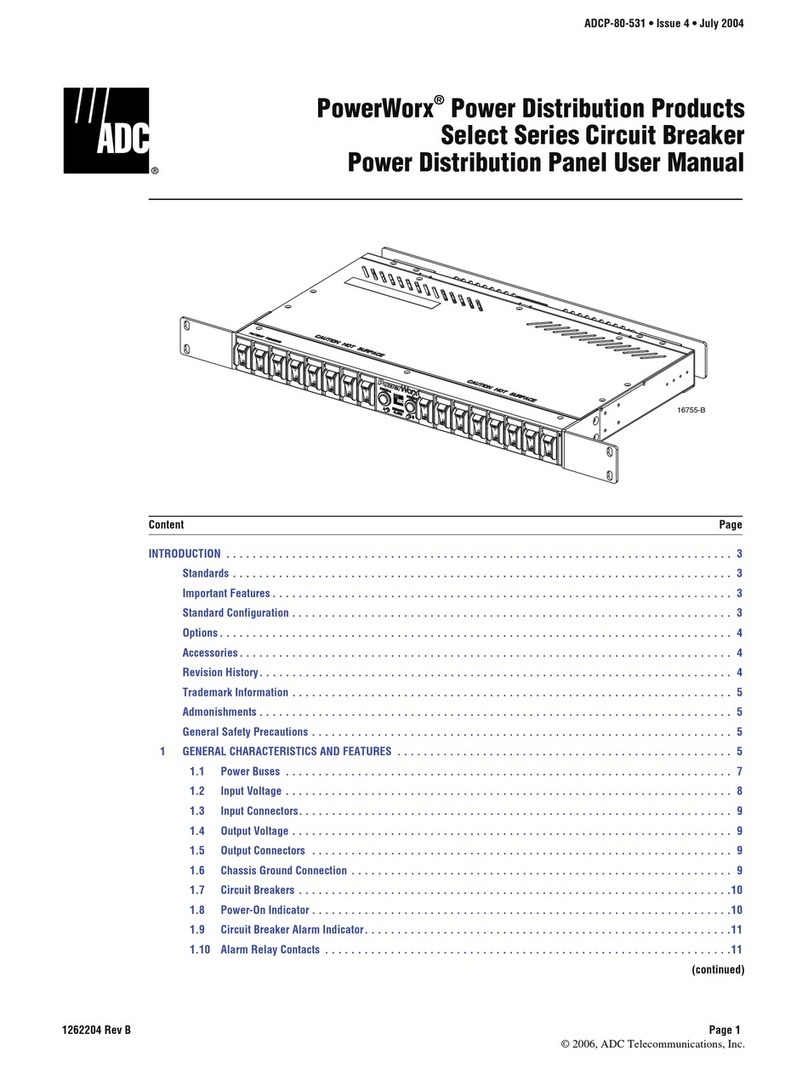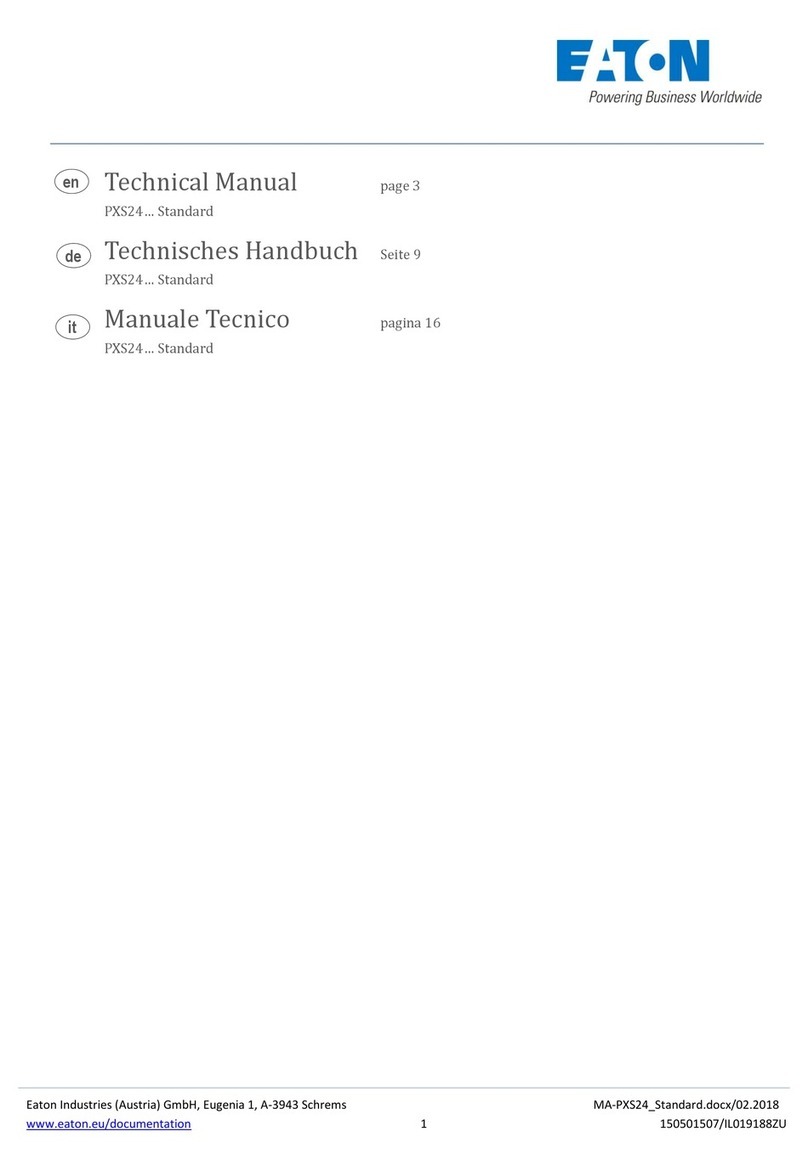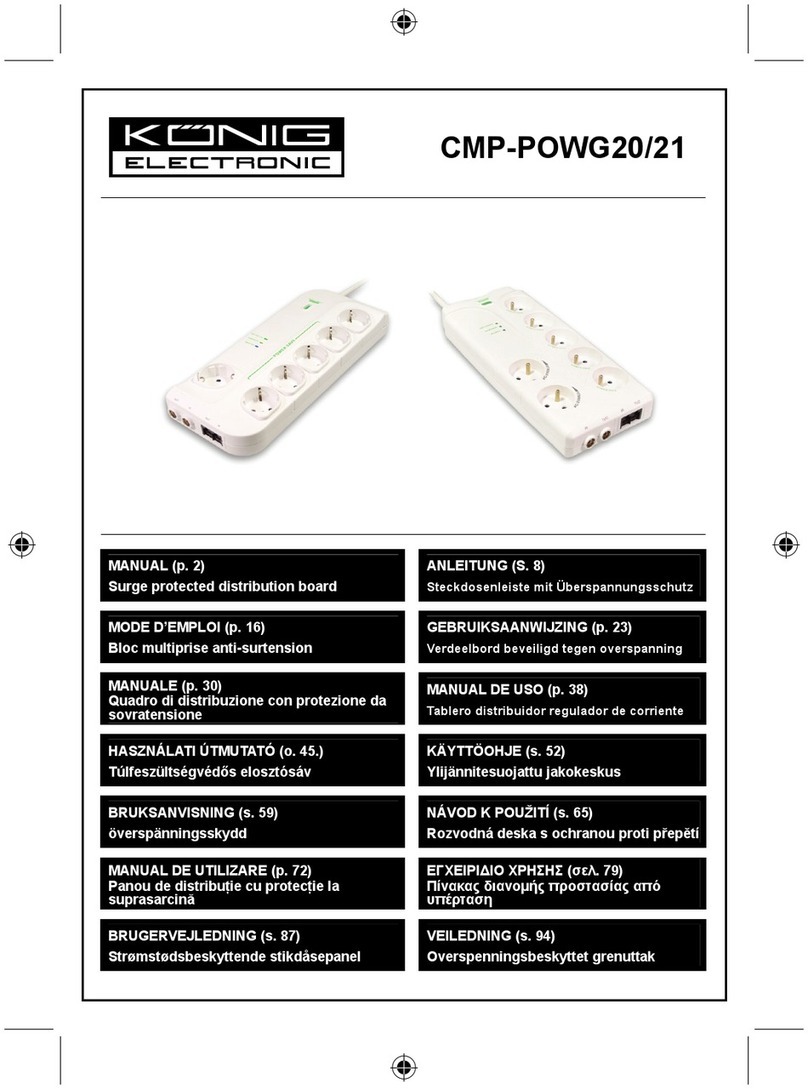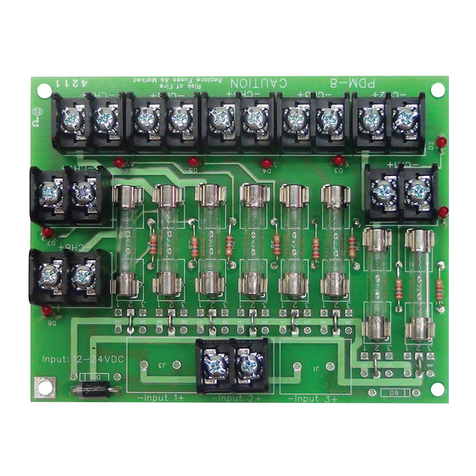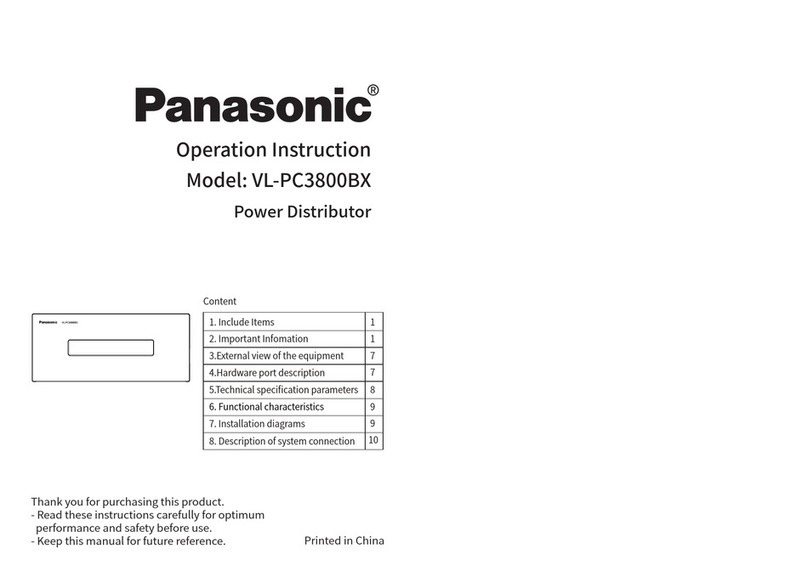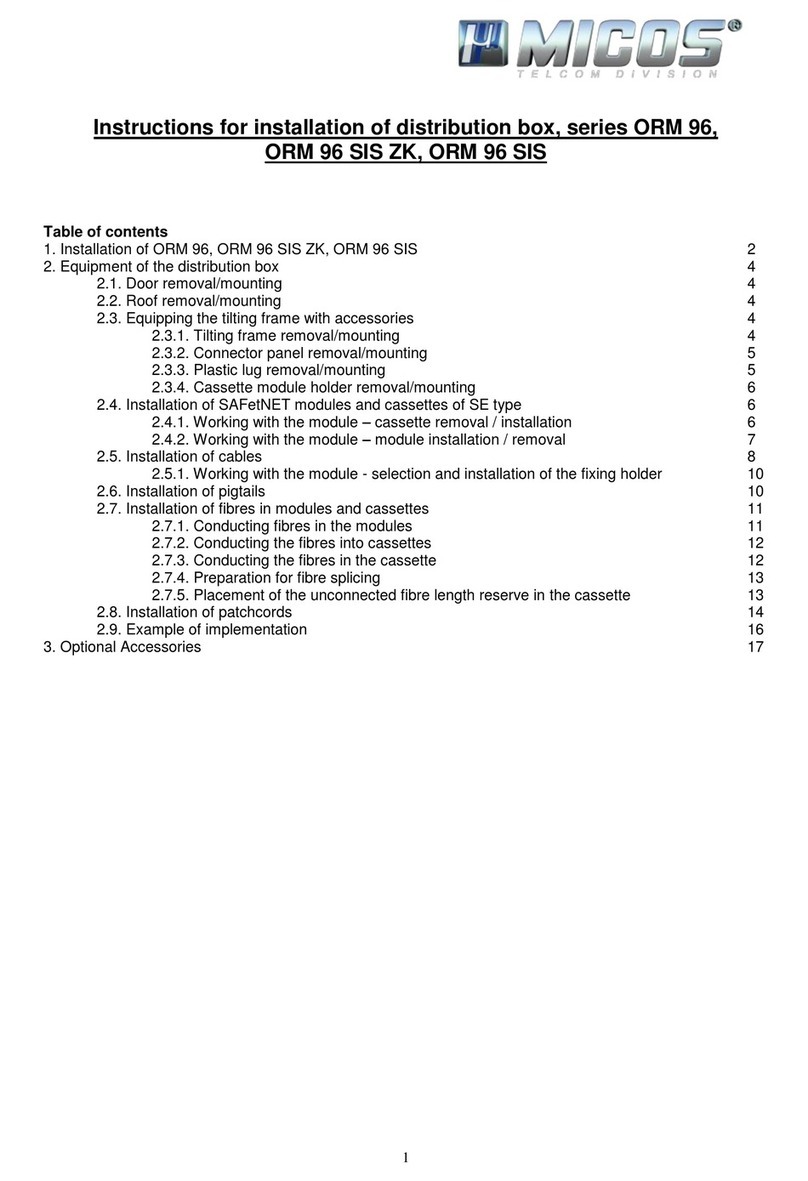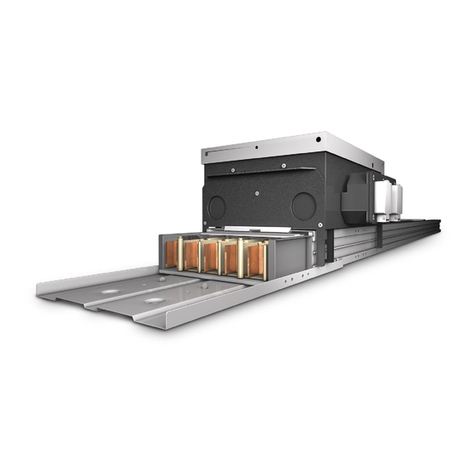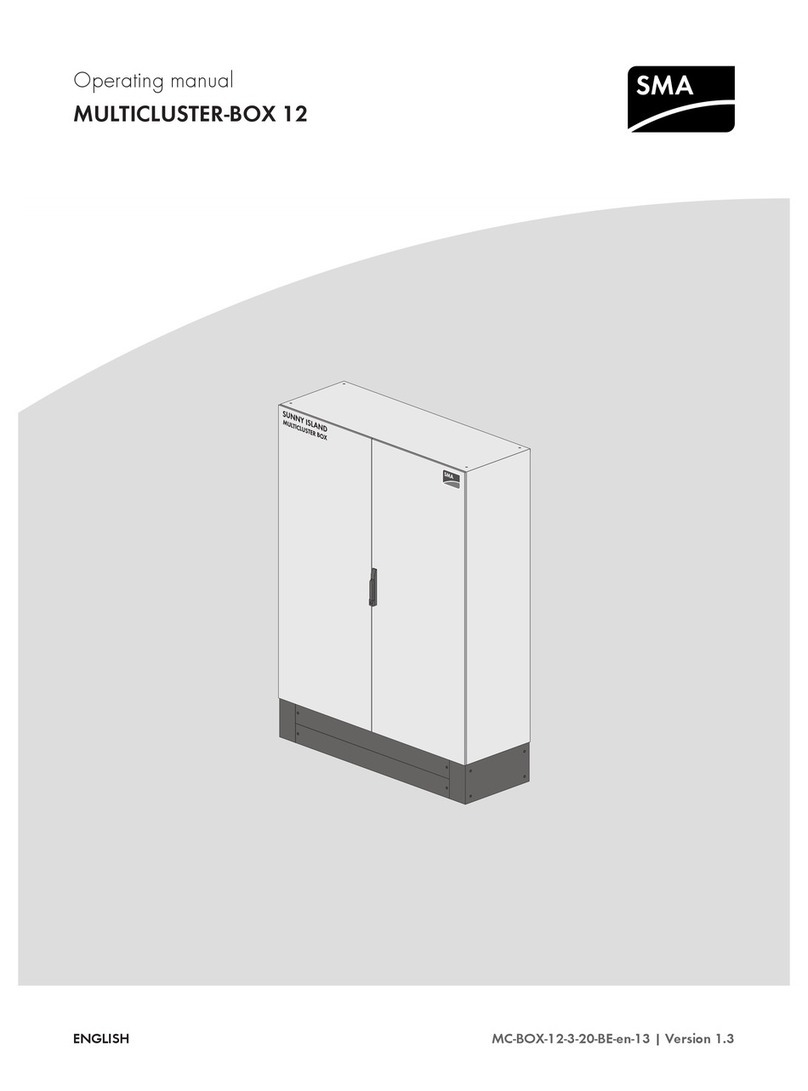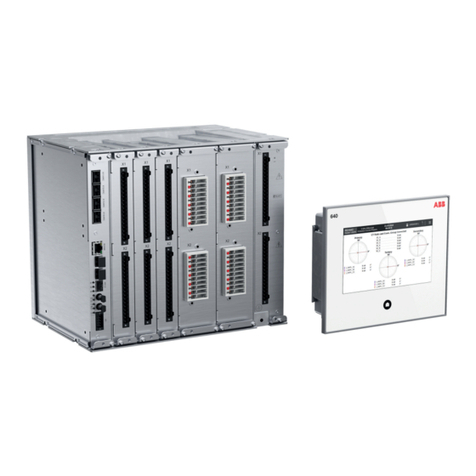ERECA SR2 User manual

SR2 Technical Manual EN
Indice : C 25/03/2019
Firmware v2.9
1 / 31
ERECA SAS - 75 rue d'Orgemont, 95210 St Gratien France T : +33 1 39 89 76 23 W : www.ereca.fr
S
ST
TA
AG
GE
E
R
RA
AC
CE
ER
R
2
2
DECENTRALISED ROUTING, DISTRIBUTION
AND PROCESSING
TECHNICAL MANUAL

SR2 Technical Manual EN
Indice : C 25/03/2019
Firmware v2.9
2 / 31
ERECA SAS - 75 rue d'Orgemont, 95210 St Gratien France T : +33 1 39 89 76 23 W : www.ereca.fr
CONTENTS
1
STAGE RACER 2 SUMMARY ....................................................................................................................3
1.1
Overview .............................................................................................................................................3
1.2
Connectivity.........................................................................................................................................3
1.3
transmission ........................................................................................................................................3
1.4
Options ................................................................................................................................................4
1.5
Visualisation ........................................................................................................................................4
1.6
Setup ...................................................................................................................................................4
1.7
Power ..................................................................................................................................................4
2
DETAILED DESCRIPTION .........................................................................................................................5
2.1
Small form factor / Integration.............................................................................................................5
2.2
Connectors location ............................................................................................................................6
2.3
Interfaces Description/ Ports Mode.....................................................................................................7
2.3.1
General Purpose IN.....................................................................................................................7
2.3.2
General Purpose OUT.................................................................................................................8
2.3.3
Analog AUDIO .............................................................................................................................9
2.3.4
AES / MADI ...............................................................................................................................10
2.3.5
DANTE.......................................................................................................................................11
2.3.6
SDI Embedding / De-Embedding. .............................................................................................11
2.3.7
Serial ports ................................................................................................................................12
2.3.8
Ethernet ports/ Mode.................................................................................................................13
2.3.9
Admin port .................................................................................................................................13
2.3.10
Genlock/Composite VIDEO port ...............................................................................................13
2.3.11
SDI VIDEO ports .......................................................................................................................14
2.3.12
OPTICAL transmission ports.....................................................................................................14
2.4
Visualisation ......................................................................................................................................16
2.4.1
General Status...........................................................................................................................16
2.4.2
Trunks........................................................................................................................................16
2.4.3
Expansion..................................................................................................................................17
2.4.4
Video Status Leds .....................................................................................................................17
2.4.5
Serial and IP ..............................................................................................................................17
2.4.6
AUDIO .......................................................................................................................................18
2.4.7
GPIO..........................................................................................................................................18
2.4.8
OLED Display ............................................................................................................................19
2.5
Optional Connectors .........................................................................................................................20
2.5.1
Description.................................................................................................................................20
2.5.2
RS422 option pinout ..................................................................................................................20
3
MANAGEMENT.........................................................................................................................................21
3.1
Web management interface..............................................................................................................21
3.1.1
Admin login / Language selection .............................................................................................21
3.1.2
Web interface Organisation.......................................................................................................22
3.2
Graph page essentials ......................................................................................................................22
3.2.1
Configure a specific node..........................................................................................................22
3.2.2
Port Setting................................................................................................................................23
3.2.3
Machine status ..........................................................................................................................24
3.2.4
Signal type summary.................................................................................................................25
3.3
Grid page / Routing signals...............................................................................................................26
3.3.1
Grid Page Presentation .............................................................................................................26
3.3.2
Establish a route between ports................................................................................................27
3.4
Backup / Reset / FW upgrade...........................................................................................................28
3.4.1
Backup/Restore a configuration ................................................................................................28
3.4.2
Reset Machine Configuration ....................................................................................................28
3.4.3
Firmware upgrade .....................................................................................................................29
4
TECHNICAL SPECIFICATIONS...............................................................................................................30
4.1
Main Hardware..................................................................................................................................30
4.2
Options ..............................................................................................................................................31

SR2 Technical Manual EN
Indice : C 25/03/2019
Firmware v2.9
3 / 31
ERECA SAS - 75 rue d'Orgemont, 95210 St Gratien France T : +33 1 39 89 76 23 W : www.ereca.fr
1 STAGE RACER 2 SUMMARY
1.1 OVERVIEW
The STAGE RACER 2 is a complete optical fibre transmission solution for every broadcast event, ranging
from simple OB interconnect to complex star, ring or linear topology spread over a whole TV compound.
It also supports long distance transmission for remote production capacity allowing content exchange
between distant locations.
Stage Racer 2 is designed to accept all kinds of signal on a same device without external adapter. Internally
those signals can be associated together / routed / distributed to all other machines of the network.
Stage Racer 2 also offers processing capabilities with Audio Embedding/De- embedding, Audio SRC, Frame
buffering, and much more…
Stage Racer 2 network can be controlled by a built-in intuitive web interface or with automation systems like
VSM, KSC Core…
1.2 CONNECTIVITY
The Stage Racer 2 is available in two standard configurations: 12 or 24 SDI channels plus a common set of
signals. Each equipment assumes transmission of a comprehensive set of signals as follows:
Stage Racer 2 – 24 SDI version Stage Racer 2 – 12 SDI version
16 SD to 3G bidirectional channels
(direction configurable)
8 SD to 3G bidirectional channels
(direction configurable)
8 SD to 12G bidirectional channels
(direction configurable)
4 SD to 12G bidirectional channels
(direction configurable)
1 Distributed Genlock (Composite video / Black burst / Tri-level)
16 Bidirectional analog audio
2 Ethernet 10/100/1000Mbs
2 Data RS 232/422/485
8 Contact closures
4 AES 3 bidirectional (Intercom panel compatible)
1 Bidirectional MADI (AES10) Signal (Shared with 2 of the 4 AES connectors)
1.3 TRANSMISSION
Transmission is based on TDM multiplexing for the all signals managed by the system. Each TDM multiplex
is transmitted to another machine by “Trunk” ports. Each machine can have up to 4 trunk ports on dual
LC/PC socket.
For remote production applications, the machine will act as a bridge between the standard and the IP world
with future compliance to SMPTE ST2110 standards. Signals managed locally can be sent over IP and vice
versa.

SR2 Technical Manual EN
Indice : C 25/03/2019
Firmware v2.9
4 / 31
ERECA SAS - 75 rue d'Orgemont, 95210 St Gratien France T : +33 1 39 89 76 23 W : www.ereca.fr
1.4 OPTIONS
Numerous hardware options can be fitted in the Stage Racer 2:
•
8 switchable mic/line gain blocks with phantom power injection and gain management,
•
Dante module providing 64 I/O channels of Dante / AES67 (shared with Ethernet port 1),
•
6 additional 500Kbs RS422 serial channels,
•
10-16VDC input to connect an external battery used in case of mains power loss,
•
Extended range QSFP+ for up to 40km transmission.
1.5 VISUALISATION
The equipment has multiple front-facing LED for signal presence and alarm display as well an Oled screen
for visualisation of IP address, trunk occupancy and optical power.
1.6 SETUP
Each frame runs an internal web server to enable remote management and setup of the entire network or
individual machine. The web interface can be accessed via the admin port of any machine from any device.
1.7 POWER
Each equipment has a built in redundant Mains power supply and can optionally be equipped with a DC
input compatible with batteries used for Cameras. Battery energy will be drawn only if both mains sources
are down, when mains will reappear battery current draw stops.

SR2 Technical Manual EN
Indice : C 25/03/2019
Firmware v2.9
5 / 31
ERECA SAS - 75 rue d'Orgemont, 95210 St Gratien France T : +33 1 39 89 76 23 W : www.ereca.fr
2 DETAILED DESCRIPTION
2.1 SMALL FORM FACTOR / INTEGRATION
The Stage Racer 2 is a 1RU rack solution ideally designed for space restricted installations. Chassis depth
is 330mm excluding connectors.
The Stage Racer 2 benefit from a very well-studied thermal conception and can operate from -20°C to
+60°C. The internal fans speed is automatically adjusted depending on the internal motherboard
temperature. At room temperature, the fans runs at minimal speed allowing the stage Racer 2 to be used in
a quiet environment.
For field application a 4 to 5 RU fly case integration offers sufficient room for properly expending all the
connections on panel BNC and XLR sockets.
Care should be taken regarding heat accumulation when proceeding to a flight case or any closed container
integration. It is important to understand the airflow of the unit and not to obstruct the air inlet and outlet
located on the side of the unit (see drawing below).
If space is limited, it is more important to allow more space for the air outlet using a small grille located in
regard of the stage racer exhaust grille. Alternatively a forced air cooling of the flight case would be sufficient
as well.

SR2 Technical Manual EN
Indice : C 25/03/2019
Firmware v2.9
6 / 31
ERECA SAS - 75 rue d'Orgemont, 95210 St Gratien France T : +33 1 39 89 76 23 W : www.ereca.fr
2.2 CONNECTORS LOCATION
The Stage Racer 2 provides signals, optical and power connectors on the rear panel. Optional Serial
connectors and optional DC power are fitted on the visualization panel.
•
Rear connectors
•
Front connectors (For Serial and DC Power options)

SR2 Technical Manual EN
Indice : C 25/03/2019
Firmware v2.9
7 / 31
ERECA SAS - 75 rue d'Orgemont, 95210 St Gratien France T : +33 1 39 89 76 23 W : www.ereca.fr
2.3 INTERFACES DESCRIPTION/ PORTS MODE
This section includes the pinout for all electrical access and describes protocol audio interfaces such as
MADI / SDI embedded Audio / Dante. For SDI, MADI and Ethernet the input process is also described in this
section in order to keep concise documentation.
2.3.1 General Purpose IN
For forward product compatibility the GP IN section is split on two kind of connectors.
Inputs 1 and 2
are shared with each Serial signal transmission RJ 45 terminal, labeled "Serial/Gpio". These
inputs are protected by an opto-coupler but are not floating; a grounding on the input pin triggers the GP-IN.
18
1: GND
2: GP IN
3: RX RS 422 – or RX RS 232
4: TX RS 422 – or TX RS 232
5: TX RS 422 +
6: RX RS 422 +
7: GP OUT
8: GP OUT
Inputs 3 to 8
are on one D-SUB 15 terminal female socket. Inputs are independent and electrically isolated
by opto-couplers. Each input is non-polarised and feature an automatic 5mA current limitation working with
an input voltage of 5 to 24 volts. The wiring polarity does not matter in this case.
Ground and power pins are available on the connector to ease interfacing with others machines especially if
a dry contact, open connector or ground closure supplies the information.
The 12 volts output of the Stage Racer 2 is protected against external short circuit by an internal 100mA
resettable fuse (polyswitch) common to the GPI and GPO sockets.
GP IN
N° SIGNAL
Socket
contact
D
SUB 15
GP IN
Socket
contact SIGNAL
3 GP IN 3a 1
19
815
9 GP IN 3b
4 GP IN 4a
2 10 GP IN 4b
5 GP IN 5a
3 11 GP IN 5b
6 GP IN 6a
4 12 GP IN 6b
7 GP IN 7a
5 13 GP IN 7b
8 GP IN 8a
6 14 GP IN 8b
GND (0V) 7 15 + 12V 100 mA
GND (0V) 8
Example: GP IN 3 (with dry contact, ground closure, open collector drive).
GP OUT
STAGE RACER 2
GP IN D SUB 15 terminal IN 3
9
1
0 V
+12V
7
15

SR2 Technical Manual EN
Indice : C 25/03/2019
Firmware v2.9
8 / 31
ERECA SAS - 75 rue d'Orgemont, 95210 St Gratien France T : +33 1 39 89 76 23 W : www.ereca.fr
2.3.2 General Purpose OUT
For forward product compatibility the GP OUT section is split on two kind of connectors.
Outputs 1 and 2
are shared with each Serial signal transmission RJ 45 terminal, labeled " Serial/Gpio ".
These outputs are on floating dry contact relays with 50 Volts AC/DC and 0.25A switching capacity.
The relay is open if the corresponding remote input is not triggered.
18
1: GND
2: GP IN
3: RX RS 422 – or RX RS 232
4: TX RS 422 – or TX RS 232
5: TX RS 422 +
6: RX RS 422 +
7: GP OUT
8: GP OUT
Outputs 3 to 8
are on one D-SUB 15 terminal female socket. These outputs are also on floating dry contact
relays with 50 Volts AC/DC and 0.25A switching capacity. The relay is also open if the corresponding
remote input is not triggered.
Ground and power pins are available on the connector to ease interfacing with others machines especially if
the driven machine need a voltage information rather than a contact closure.
The 12 volts output of the Stage Racer 2 is protected against external short circuit by an internal 100mA
resettable fuse (polyswitch) common to GPI and GPO sockets.
Relay
N° SIGNAL
Socket
contact
D
SUB 15
GP OUT
Socket
contact SIGNAL
3 GP OUT 3a 1
19
815
9 GP OUT 3b
4
GP OUT 4a
2 10
GP OUT 4b
5
GP OUT 5a
3 11
GP OUT 5b
6
GP OUT 6a
4 12
GP OUT 6b
7
GP OUT 7a
5 13
GP OUT 7b
8
GP OUT 8a
6 14
GP OUT 8b
GND (0V) 7 15 + 12V 100 mA
GND (0V) 8
Each GPI can be affected to one or Multiple GPO by using the GPIO routing grid of the Stage racer 2.

SR2 Technical Manual EN
Indice : C 25/03/2019
Firmware v2.9
9 / 31
ERECA SAS - 75 rue d'Orgemont, 95210 St Gratien France T : +33 1 39 89 76 23 W : www.ereca.fr
2.3.3 Analog AUDIO
2.3.3.1 Pinout
One D-SUB 37 pin female socket provides the access to the 16 balanced analog AUDIO IN.
One D-SUB 37 pin female socket provides the access to the 16 balanced analog AUDIO OUT.
SIGNAL Socket
contact
D SUB 37
AUDIO
In/Out
Socket
contact SIGNAL
AUDIO 1 +
1
120
19 37
20
AUDIO 1
-
AUDIO 2 +
2
21
AUDIO 2
-
AUDIO 3 +
3
22
AUDI
O 3
-
AUDIO 4 +
4
23
AUDIO 4
-
AUDIO 5 +
5
24
AUDIO 5
-
GND
6
25
GND
AUDIO 6 +
7
26
AUDIO 6
-
AUDIO 7 +
8
27
AUDIO 7
-
AUDIO 8 +
9
28
AUDIO 8
-
AUDIO 9 +
10
29
AUDIO 9
-
AUDIO 10 +
11
30
AUDIO 10
-
GND
12
31
GND
AUDIO 11 +
13
32
AUDIO 1
1
-
AUDIO 12 +
14
33
AUDIO 12
-
AUDIO 13 +
15
34
AUDIO 13
-
AUDIO 14 +
16
35
AUDIO 14
-
AUDIO 15 +
17
36
AUDIO 15
-
GND
18
AUDIO 16 +
19
37
AUDIO 16
-
Those audio signals will appear in the Audio grid of Stage racer 2.
2.3.3.2 Audio Mic gain (option)
The gain blocks are connected to channels 9 to 16.
Thru the web server each input 9 to 16 can be amplified independently with a gain ranging from 9 to 60 dB
(3dB steps) with or without Phantom power supply.
If the gain on a channel is not desired the gain block can be totally bypassed and the input recovers the line
input level.
The phantom power capacity is 10mA for each channel.
Caution: Beware of the input phantom power, after switching off the phantom power the 48Volts will still be
present for few seconds on the inputs, time needed by the inputs capacitor to discharge thru the internal
discharge resistor.
Note: The Mic gain board can be fitted afterwards.

SR2 Technical Manual EN
Indice : C 25/03/2019
Firmware v2.9
10 / 31
ERECA SAS - 75 rue d'Orgemont, 95210 St Gratien France T : +33 1 39 89 76 23 W : www.ereca.fr
2.3.4 AES / MADI
Digital audio is available on true 75 Ohms BNC sockets.
The total capacity of the Stage Racer 2 is 4 simultaneous bidirectional AES signals. Thru the web server,
the AES 3 and 4 can be disabled to allow for MADI.
Caution: Avoid connecting 50 ohms plugs it will damage the socket central pin causing costly repair
especially if this one is on the lower part of the connector side.
2.3.4.1 Bidirectional AES
Each AES port is internally equipped with a 2-4 wire converter connected to transmit a fully bidirectional
path to any distant AES port of the Stage Racer 2 network. It appear in the AES audio grid of the network.
This allow to interconnect talkback panels working in a bidirectional manner on one 75 Ohms coax. The
ports still can be used without configuration to transport unidirectional signal, no setup needed for channel
direction.
Note1: For the internal 2-4 wire converter correct behaviour the source/terminal impedance of the machine
connected to the AES ports must be 75 Ohms.
Note2: The bidirectional function of the device constraint the design especially to provide an accurate AES
activity led display and avoid signal loop if port impedance is not 75 ohms. The internal FPGA seeks for
AES3 audio XYZ preamble at 48 KHz to light the corresponding AES Led and enable transmission in this
direction.
2.3.4.2 MADI
When selected through the web server, madi can be transmitted and port 3 become MADI input and port 4
become MADI output.
Stage racer 2 offers 2 principles for MADI transmission described below.
•
MADI RAW transport and routing:
MADI is transmitted with the packet engine and the stage racer does not takes care of the MADI content.
A MADI signals can be distributed to multiple MADI outputs thanks to the routing grid.
For transmission, the MADI clock information is transmitted along the MADI signal. At the receiving side the
original clock is precisely regenerated and the MADI data is delivered accordingly to this clock.
The MADI output VCXO capture range is +/- 100 ppm.
•
MADI signal pick-up and insertion:
In parallel to the raw transport, the MADI input signal can be internally decoded and its channels affected to
other internal audio resources (Analog/Dante/Madi/SDI Embedded) of the stage racer 2 network. All
decoded MADI audio transits thru SRC on order to be at Stage racer internal audio frequency.
Similarly a Madi output can be created by picking signals of various sources (Analog/Dante/Madi/SDI De-
Embedded) present in the stage racer 2 network. In this case MADI is synchronous of the internal audio
clock.
Madi formats supported are 56/64 channels at 48 Khz.

SR2 Technical Manual EN
Indice : C 25/03/2019
Firmware v2.9
11 / 31
ERECA SAS - 75 rue d'Orgemont, 95210 St Gratien France T : +33 1 39 89 76 23 W : www.ereca.fr
2.3.5 DANTE
The optional Dante board capacity provided by Ereca is 64 channels in and out.
Each individual Dante board channel can be selected and affected to the stage racer internal audio bus and
routed to any stage racer 2 audio output interface (Analog/Dante/Madi/SDI Embedded).
Similarly Dante output channels can be populated by picking signals of various sources (Analog/Dante/
Madi/SDI De-Embedded) present in the stage racer 2 network. All of those signals appear in the Audio
audio grid of the stage racer 2 network.
The Dante board embedded in the Stage racer 2 will appear as a slave in the user Dante controller.
Two SRC are used to synchronize DANTE inputs to the Stage racer 2 internal audio frequency and to
synchronize Stage racer 2 internal audio to DANTE outputs.
Note1: The Dante board is available on port IP-1. It can be ‘’disconnected’’ from IP-1 port if unused, so
Dante controller will not see undesired interfaces and no address conflict may happen.
Note2: The Dante board can be fitted afterwards.
2.3.6 SDI Embedding / De-Embedding.
Each SDI channel of a stage racer 2 frame is equipped with a 2 groups Embedder / De-
Embedder. Depending of the SDI port direction only one is active. For 12G/6G channels only the
first 3G stream is equipped with embedding / de-embedding resources. This logic is working for
48Khz embedded audio rates.
•
SDI port is an Input:
Up to 2 groups can be de-embedded and up to 8 audios can be selected and affected to the stage racer
internal audio bus and routed to any stage racer 2 audio output interface (Analog/Dante/Madi/SDI
Embedded). An SRC is used to adapt from Embedded audio rate to the Stage racer 2 internal audio
frequency.
•
SDI port is an Output:
Up to 2 groups can be Embedded and up to 8 audios can be sent by picking signals of various sources
(Analog/Dante/ Madi/SDI De-Embedded) present in the stage racer 2 network. An SRC is used to adapt the
Stage racer 2 internal audio frequency to the SDI clock locked 48Khz.
Caution: All SDI ports features de-embedders. On early FW embedder is not available on all ports (actually
only ports 4,5,10,11,16,17 and 23 do have).

SR2 Technical Manual EN
Indice : C 25/03/2019
Firmware v2.9
12 / 31
ERECA SAS - 75 rue d'Orgemont, 95210 St Gratien France T : +33 1 39 89 76 23 W : www.ereca.fr
2.3.7 Serial ports
Two multiprotocol RS232/422/485 serial signals are transmitted in standard by the equipment.
The supported data rate of each signal is about 500Kbds.
The setting of the serial protocol is done within the web server of the Stage Racer 2.
2.3.7.1 RS422/485
The RJ 45 connector provide 1 differential pair for RS422 transmission and 1 differential pair for RS422
reception.
To build a half-duplex RS485 transmission, just bridge “pin 3 with pin 4” and “pin 5 with pin 6”.
For RS485, setup the corresponding Baud rate within the web server to enable the Stage Racer 2 to
manage the output impedance at the right serial byte duration.
Connect the Shield to pin 1.
18
1: GND
(Shield)
2: GP IN
3: RX RS 422 – (Stage Racer 2 electrical OUTPUT)
4: TX RS 422 – (Stage Racer 2 electrical INPUT)
5: TX RS 422 + (Stage Racer 2 electrical INPUT)
6: RX RS 422 + (Stage Racer 2 electrical OUTPUT)
7: GP OUT
8: GP OUT
Note: For RS 485 Telex/RTS talkback panels please ask ERECA for wiring tip.
2.3.7.2 RS232
Refer The RS 232 signal ground to pin 1. Leave pins 5 and 6 unconnected.
1
8
1: GND (Ground ref/Shield)
2: GP IN
3: RX RS 232 – (Stage Racer 2 electrical OUTPUT)
4: TX RS 232 – (Stage Racer 2 electrical INPUT)
5: Do not connect
6: Do not connect
7: GP OUT
8: GP OUT
Those serial ports appear in the RS232/422/485 grid and are connectable in a peer 2 peer manner.

SR2 Technical Manual EN
Indice : C 25/03/2019
Firmware v2.9
13 / 31
ERECA SAS - 75 rue d'Orgemont, 95210 St Gratien France T : +33 1 39 89 76 23 W : www.ereca.fr
2.3.8 Ethernet ports/ Mode
The Stage Racer 2 offers 2 independent Gigabit Ethernet ports, which can either be isolated or connected
together through an internal switch. Setting is done in the web Gui.
- When they are isolated, they behave like two completely separate ports which enables to create totally
independent Peer to Peer connexions over the Stage racer 2 network.
- When the ports are connected, they can communicate with each other through an internal switch. Thus
allow to create a distributed switch along the Stage racer 2 network in a daisy chained manner.
Note: The extremity nodes of the daisy chain can be isolated or connected. If they are isolated the remaining
port can be used to create another separate network connexion.
Note1: The Dante board is available on port IP-1.
Note2: Port speed is 10/100/1000Mbs Autosense and support straight or crossed cables.
2.3.9 Admin port
The Stage Racer 2 is equipped with a dedicated admin port to access the web interface. Port speed is
10/100Mbs Autosense and support straight or crossed cables.
The IP of the machine can be found using the navigation buttons next to the LCD INFO screen.
Firefox browser is recommended for Gui usage.
2.3.10 Genlock/Composite VIDEO port
This port supports Composite PAL, SECAM & NTSC / Black Burst / Tri-level sync compatible is transmitted
thru the Stage Racer 2 via the G/L port.
In a Stage Racer 2 network, the G/L port is direction switchable and work as follows: when the Genlock port
direction is set to input on a particular unit, the direction of all the other Genlock ports of all units connected
to the network will automatically be set to output. Then genlock is distributed to all the machines over the
network.
Composite video is carefully processed with Minimal latency and high quality process with +/-3dB AGC
input, 2x over sampling and 10 bits digital filtering and transmission is provided for this signal.
Internally each machine extracts Video and Audio genlocked clocks for frame buffering purposes.

SR2 Technical Manual EN
Indice : C 25/03/2019
Firmware v2.9
14 / 31
ERECA SAS - 75 rue d'Orgemont, 95210 St Gratien France T : +33 1 39 89 76 23 W : www.ereca.fr
2.3.11 SDI VIDEO ports
Depending on the option chosen at the time of order, the Stage Racer 2 can be built with either 12 or 24
video channels. This is not retroftittable afterwards.
The 8 BNC of the upper row and 8 mini-BNC of the middle row can accept SD/HD/3G signals.
The 8 BNC of the lower row can accept SD/HD/3G/6G/12G.
Each video port is direction switchable helping user to avoid congestion at locations with highly unbalanced
number of Inputs or Outputs.
Each interface will automatically accept a standard at equal or lower rate than the standard set in the
machine.
Caution: Avoid connecting 50 ohms plugs it will damage the socket central pin causing costly repair
especially if this one is on the lower part of the connector side.
Note: ASI support is internally developed but not yet validated.
2.3.12 OPTICAL transmission ports
2.3.12.1 Optical connexion
The Stage Racer 2 transmission is based on TDM
multiplexing for the all signals managed by the system. Each
TDM multiplex is transmitted to another machine by “Trunk”
ports.
Each unit can have up to 4 trunk ports on dual LC/PC socket
for Single Mode fibre (minimum is 1 for a network endpoint).
Trunks are labelled A-B-C-D and can be connected randomly
as long as the duplex fiber is connected properly :
(Tx & Rx of the same trunk -> Rx & Tx of another trunk of a
different unit).
Each trunk is capable of transporting up to 40Gbs of data In and Out. Trunks can be combined to offer more
bandwidth or redundancy between network nodes.
2.3.12.2 Transmission principle.
Most part of the bandwidth is dynamically allocated for high datarate signals (SDI / Ethernet / Raw Madi),
For any signal bandwidth is consumed only between the sources and the destinations programmed for this
signal. Elsewhere on the network this amount of bandwidth is free for other signals.
A small remaining bandwidth is fixed and guaranteed, dedicated to low datarate signals (Genlock / Audio /
Serial / GPIO / System management) with a predefined maximum channel capacity per signal type.
As a base rule, each trunk total capacity is:
• 25 HD signals (or similar rate signals like GB Ethernet), or 12x3G or 3x12G or any combination,
• 1 Genlock / Trilevel / Composite,
• 400 Bidirectional Audio channels,
• 50 Bidirectional Serial channels,
• 200 Bidirectional GPIO.

SR2 Technical Manual EN
Indice : C 25/03/2019
Firmware v2.9
15 / 31
ERECA SAS - 75 rue d'Orgemont, 95210 St Gratien France T : +33 1 39 89 76 23 W : www.ereca.fr
2.3.12.3 Trunk types
Internally a Trunk comprises of a QSFP+ mounted and connected inside the machine to the LC/PC sockets
on the back of the unit. Different models can cohabitate in the unit depending of customer needs.
There are at least two types of modules available:
STAR2-T4LR: Long Reach optical module offering a guaranteed optical transmission of up to 10km. This is
the most common type of Trunk used in Stage Racer 2.
STAR2-T4ER: For much longer distance the Extended Reach optical module is designed for 40Km
transmission.
CAUTION: The high sensitivity APD receivers of the T4ER may be destroyed by optical power overload, do
NOT apply more than -10dBm on the input port (labelled R). A damaged T4ER receiver port is not covered
by warranty.
Similarly if too much power is applied the receiver may overload and the link will not establishes, in this case
the optical power reading on the interface may be false as well.
NOTE: The Extended Reach module transmission length it may be affected by fiber chromatic dispersion.
Losses in some rare cases of very old fiber.
REMARK: It is advised to source the QSFP+ at Ereca as factory validates it one by one for compliance with
Stage Racer 2 standard. Also the warranty label will be broken.

SR2 Technical Manual EN
Indice : C 25/03/2019
Firmware v2.9
16 / 31
ERECA SAS - 75 rue d'Orgemont, 95210 St Gratien France T : +33 1 39 89 76 23 W : www.ereca.fr
2.4 VISUALISATION
The display face provides a comprehensive LED panel of the STAGE RACER 2.
For ease of trouble shooting one LED is affected per transmitted signal.
The 2 mains PSU fuses are also located on this side of the equipment for ease of replacement. (Model is
250Vac 2Amp time lag 5x20mm fuse).
2.4.1 General Status
Status related to power supply
•
PSU 1:
Green LED, ON when the PSU module 1 is powered.
•
PSU 2:
Green LED, ON when the PSU module 2 is powered.
•
DC IN:
Green LED, ON when the battery is in use (in that case
PSU1 and PSU2 are unpowered)
General
•
ADMIN:
GREEN LED, ON when a connection is established
on the admin port.
Technical alarms
•
TEMP:
Red LED, ON when the internal temperature is over 70°C
•
FAN:
Red LED, ON when an internal fan is out of service (Open circuit or Stuck)
•
OPTICAL:
Red LED, ON when the power is low on a connected trunk
2.4.2 Trunks
Trunk activity
•
LINK:
Green LED, ON when a connection is established with another machine
on that particular trunk port (A, B, C or D).
Trunk occupation
•
LED OFF,
when trunk is not used (occupation at 0%)
•
Green LED, ON
when trunk occupation is between 0% to 49%
•
Orange LED, ON
when trunk occupation is between 50 to 100%
•
Red LED, ON
when there is a problem with the trunk

SR2 Technical Manual EN
Indice : C 25/03/2019
Firmware v2.9
17 / 31
ERECA SAS - 75 rue d'Orgemont, 95210 St Gratien France T : +33 1 39 89 76 23 W : www.ereca.fr
2.4.3 Expansion
The stage racer 2 offers 4x10GB Ethernet expansion channels via the MPO
connector for remote production and future various other applications. As an
example of what can be done:
•
ST2110: Green LED, ON
when ST2110 mode is activated in the machine.
•
ST2022: Green LED, ON
when ST2110 mode is activated in the machine.
•
GIGABIT: Green LED, ON
when extra Gbe ports are transmitted.
•
MADI: Green LED, ON
when extra MADI’s are transmitted on this machine.
•
Link 1-4: Green LED, ON
to indicate which expansion channel is linked with a peer.
2.4.4 Video Status Leds
Genlock I/O
•
IN: Green LED, ON
when the unit is Genlock master on
the network and a valid Genlock signal is detected on the
input.
•
OUT: Green LED, ON
when the unit is Genlock slave on
the network and a valid Genlock signal is detected on the
output.
•
Tri-Level: Green LED, ON
when a Tri-level signal is
detected on the G/L port.
The SDI LED
(1 to 24) section indicates the detection of a video signal and its direction.
•
LED OFF
, when the SDI port is disabled via the web interface.
•
Green LED, ON
when the port is configured as Input and a signal is detected conform to its
standard.
•
Red LED, ON
when the port is configured as Input, but no signal is received or the signal is not
conform to its configured standard. (for example, the port is configured to receive an SD signal but a
3G signal is actually present)
•
Orange LED, ON
when the port is configured as output and a valid signal is routed to that port
•
Red blinking LED, ON
when an input channel is routed to that output port but no signal is detected
2.4.5 Serial and IP
Serial RS
•
RS1 IN, Green LED ON
, when a serial signal is received on the serial port 1
•
RS1 OUT, Green LED ON
, when a serial signal is sent via the serial port 1
•
RS2 IN, Green LED ON
, when a serial signal is received on the serial port 2
•
RS2 OUT, Green LED ON
, when a serial signal is sent via the serial port 2
Ethernet
•
IP1 LINK, Green LED ON,
when an Ethernet link is established on port IP1
•
IP1 1G, Green LED ON,
when the IP link 1 is linked at 1GBps
•
IP2 LINK, Green LED ON,
when an Ethernet link is established on port IP 2
•
IP2 1G, Green LED ON,
when the IP link 2 is linked at 1GBps

SR2 Technical Manual EN
Indice : C 25/03/2019
Firmware v2.9
18 / 31
ERECA SAS - 75 rue d'Orgemont, 95210 St Gratien France T : +33 1 39 89 76 23 W : www.ereca.fr
2.4.6 AUDIO
AES/MADI led state depends of the equipment setting (4 AES
or
2 AES + MADI IN + MADI OUT).
4 bidirectional AES signals.
•
AES 1-4, Green LED ON,
when a 48Khz AES signal is fed on the corresponding port
In that case,
All Madi Led are Off.
2 bidirectional AES signals + 1 MADI I/O
•
AES 1-2 Green LED ON,
when a 48KHz AES signal is fed on the corresponding port
•
MADI IN, Green LED ON
, when a MADI signal is received on MADI In Port
•
MADI OUT, Green LED ON
, when a MADI signal is sent on MADI Out Port
•
MADI UNS., Red LED ON
, if the internal reclocker is not locked on the input MADI signal.
Dante
•
Dante, Green LED ON
, when the Dante hardware module is properly installed and recognised by
the external Dante controller.
Analog Audio
•
1-16, Green LED ON,
indicates the activity of an analog audio signal received on the input port
and/or the output port.
Note: The trigger level is set to -10dBm approximatively. Audio activity LEDs are refreshed every
500ms displaying if there was a level > -10dBm on the past 500ms period providing a smooth
display.
2.4.7 GPIO
•
GPIO 1-8, Green LED ON
, when a GPI or GPO is activated on their respective input
and output.

SR2 Technical Manual EN
Indice : C 25/03/2019
Firmware v2.9
19 / 31
ERECA SAS - 75 rue d'Orgemont, 95210 St Gratien France T : +33 1 39 89 76 23 W : www.ereca.fr
2.4.8 OLED Display
•
Screen
This section provides a list of real time
information for control purposes.
The blue buttons on the right allow
navigating between the different information
listed below and allows performing a factory
reset of the unit. (Need firm finger press in
their center).
•
List of messages
Machine Name:
SR2-Commentary Name of the machine set in the web interface
IP address:
192.168.1.248 IP address of the machine set in the web interface
MAC Address:
507E:EC00:4107 MAC address of the machine
TA Rx 0.2 dBm
TB Rx -0.4 dBm Lowest optical power received on Trunks A & B
TC Rx -6.5 dBm
TD Rx -40 dBm Lowest optical power received on Trunks C & D
Intern Tp 38 Deg
Fan Speed 9%
Internal temperature of unit (operating range: -20°C to +60°)
Fan speed is automatically adjusted depending on internal temperature
Trunk A load
In: 4% Out: 0%
Occupation of trunk A
In: Bandwidth occupation of signals coming from the distant Node
Out: Bandwidth occupation of signals sent to the distant Node
Trunk B load
In: 40% Out: 32%
Occupation of trunk B
In: Bandwidth occupation of signals coming from the distant Node
Out: Bandwidth occupation of signals sent to the distant Node
Trunk C load
In: 75% Out: 67%
Occupation of trunk C
In: Bandwidth occupation of signals coming from the distant Node
Out: Bandwidth occupation of signals sent to the distant Node
Trunk D load
In: 0% Out: 0%
Occupation of trunk D
In: Bandwidth occupation of signals coming from the distant Node
Out: Bandwidth occupation of signals sent to the distant Node
•
Reset from pushbuttons
The unit can be individually reset to factory default configuration.
It is important to understand all configuration made on this unit will be lost. Therefore, we recommend you to
make a backup of the unit via the web interface prior to this operation.
To perform a factory reset:
- Disconnect the unit from the network by temporarily remove the trunks fibres connected to it
- Press and hold the
up
and
down
button for 3s and wait for the message “Press Val…” to appear
- Then the
validate
button on the right side of the screen needs to be pressed within 5s, otherwise, the
operation will cancel automatically.
- After the operation is complete, it is recommended to reboot the unit.

SR2 Technical Manual EN
Indice : C 25/03/2019
Firmware v2.9
20 / 31
ERECA SAS - 75 rue d'Orgemont, 95210 St Gratien France T : +33 1 39 89 76 23 W : www.ereca.fr
2.5 OPTIONAL CONNECTORS
2.5.1 Description
Available hardware options
There are two hardware options available on D-Sub25
connectors:
•
6 additional 500Kbps RS422 channels
In this case the 6 LED next to the connector will
display the IN/OUT activity of each additional serial
links.
•
DC input
Provision for D sub socket with power inserts
to connect a 10-16 VDC battery to power the Stage
Racer 2, used in case of mains power loss.
Caution: The DC input is protected by internal fast acting fuse, any polarity reversal will blow the fuse. Due
to the high current involved a resettable protection is not possible.
2.5.2 RS422 option pinout
One D SUB 25 pin female socket provides access to additional RS422 optional channels 1 to 6.
Channel SIGNAL
Socket
contact
D SUB
25
RS422 1to6
Socket
contact SIGNAL
1
(3)
IN 1
-
1
1
25
14
13
14
IN 1 +
1
(3)
OUT 1 +
2
15
OUT 1
-
2
(4)
IN 2
-
3
16
IN 2 +
2
(4)
OUT 2 +
4
17
OUT 2
-
3
(5)
IN 3
-
5
18
IN 3 +
3
(5)
OUT 3 +
6
19
OUT 3
-
all
GND
7
20
IN 4
-
4
(6)
IN 40 +
8
21
OUT 4 +
4
(6)
OUT 4
-
9
22
IN 5
-
5
(7)
IN 5 +
10
23
OUT 5 +
5
(7)
OUT 5
-
11
24
IN 6
-
6
(8)
IN 6 +
12
25
OUT 6 +
6
(8)
OUT 6
-
13
Remark: (x) denotes the logical channel in the GUI.
It is strongly recommended to connect the shield of the signals transmitted to the GND pin.
Each LED summarize the Input and Output signal activity on the corresponding channel.
Each signal activity is also reported on the web interface.
Each differential input is not 120Ohms loaded internally for optimum compatibility with transmitted protocols.
If impedance matching is needed a small SFR16 resistor could be added directly on the D SUB pins,
together with the signal wire.
Note 1: For RS 485 Telex/RTS talkback panels please ask ERECA for wiring tip.
Note 2: As the differential inputs are unloaded internally a small crosstalk should happen on the adjacent
channel only if it is unused and left floating.
Table of contents
Popular Power Distribution Unit manuals by other brands
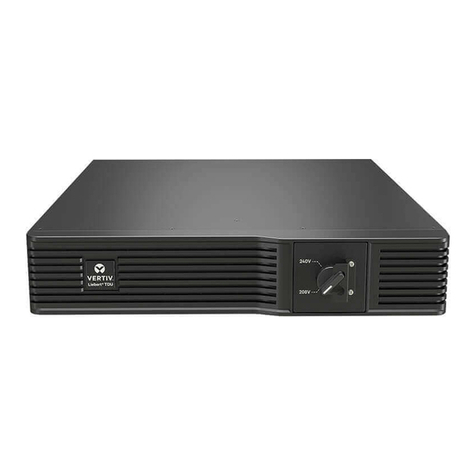
Vertiv
Vertiv Liebert TDU-3500RTL620 Quick installation user's guide
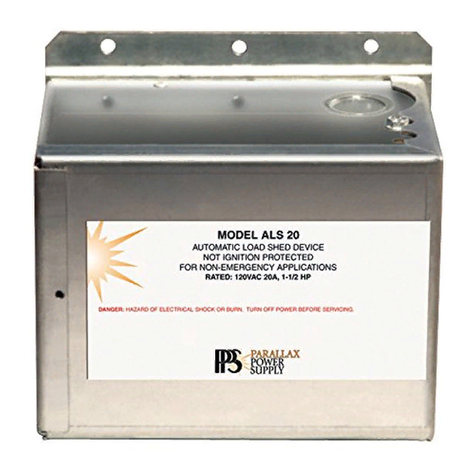
Parallax Power Supply
Parallax Power Supply ALS 20 Owner's operation guide
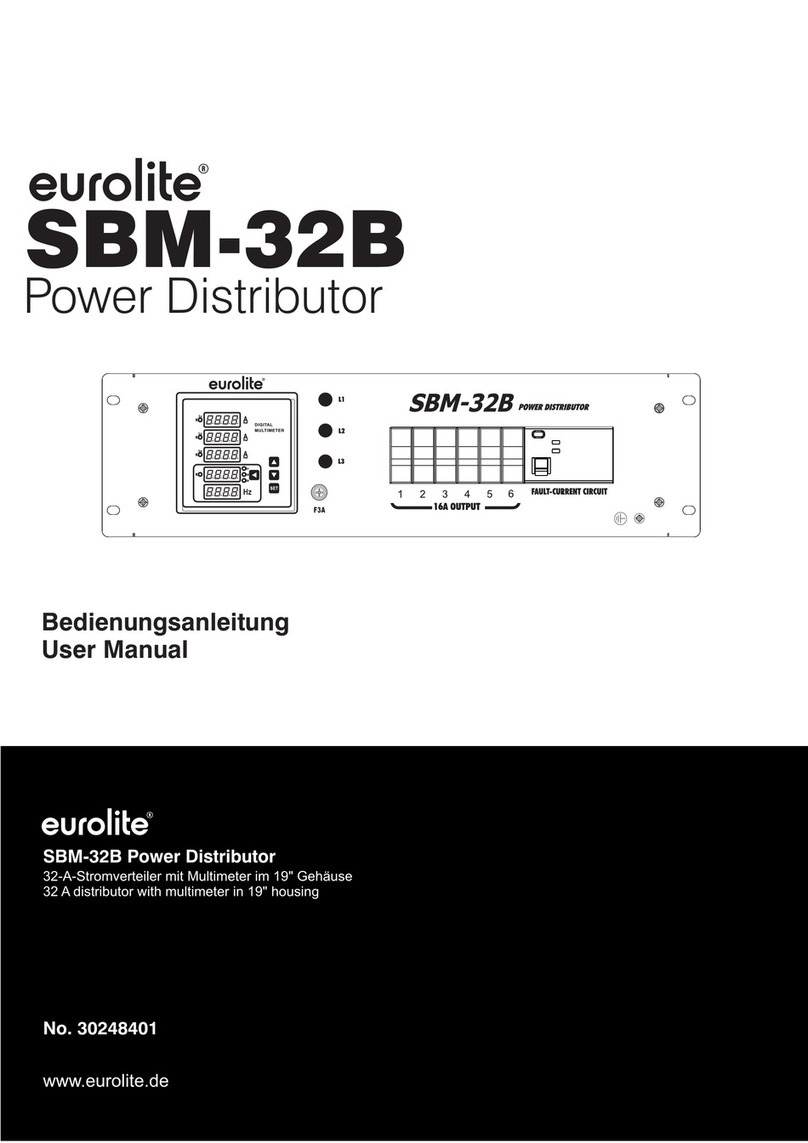
EuroLite
EuroLite SBM-32B user manual
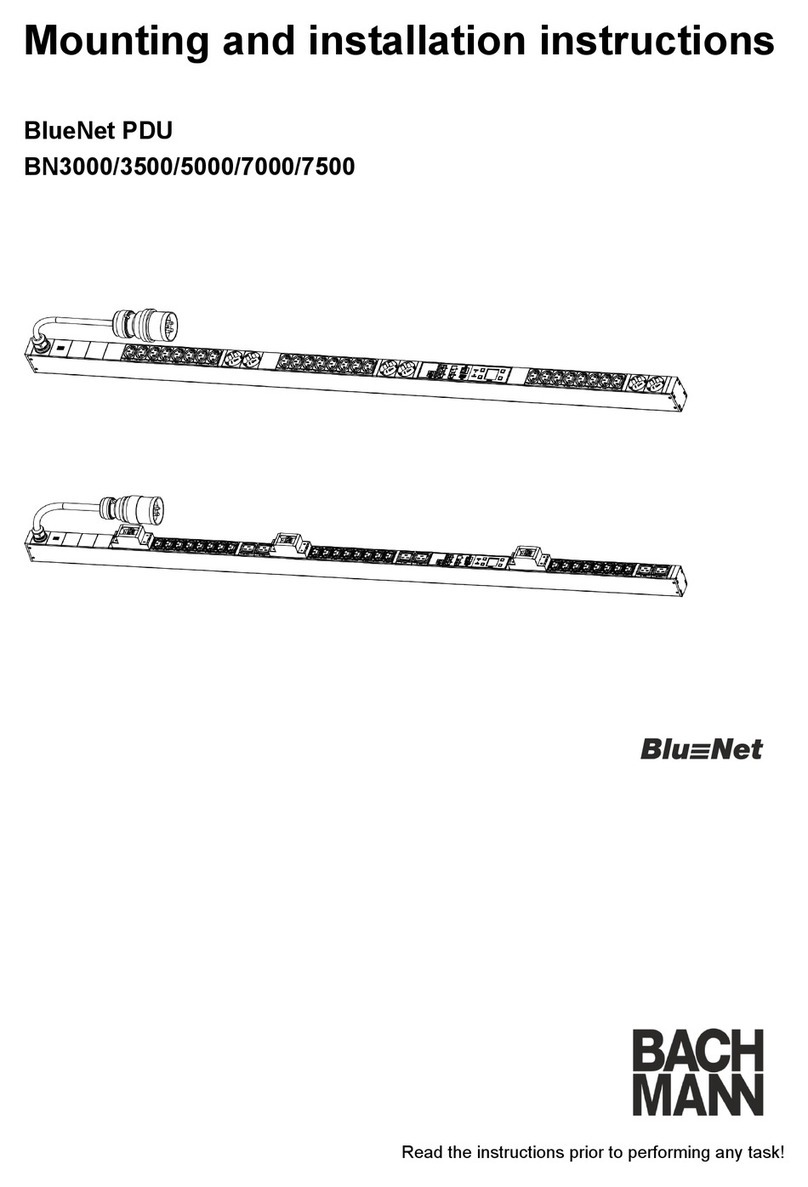
Bachmann
Bachmann BlueNet BN3000 Mounting and installation instructions
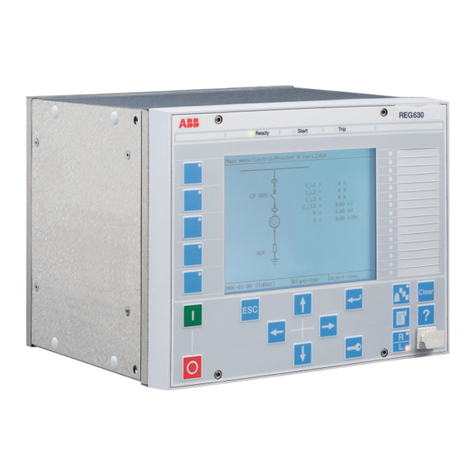
ABB
ABB Relion 630 Series Product guide
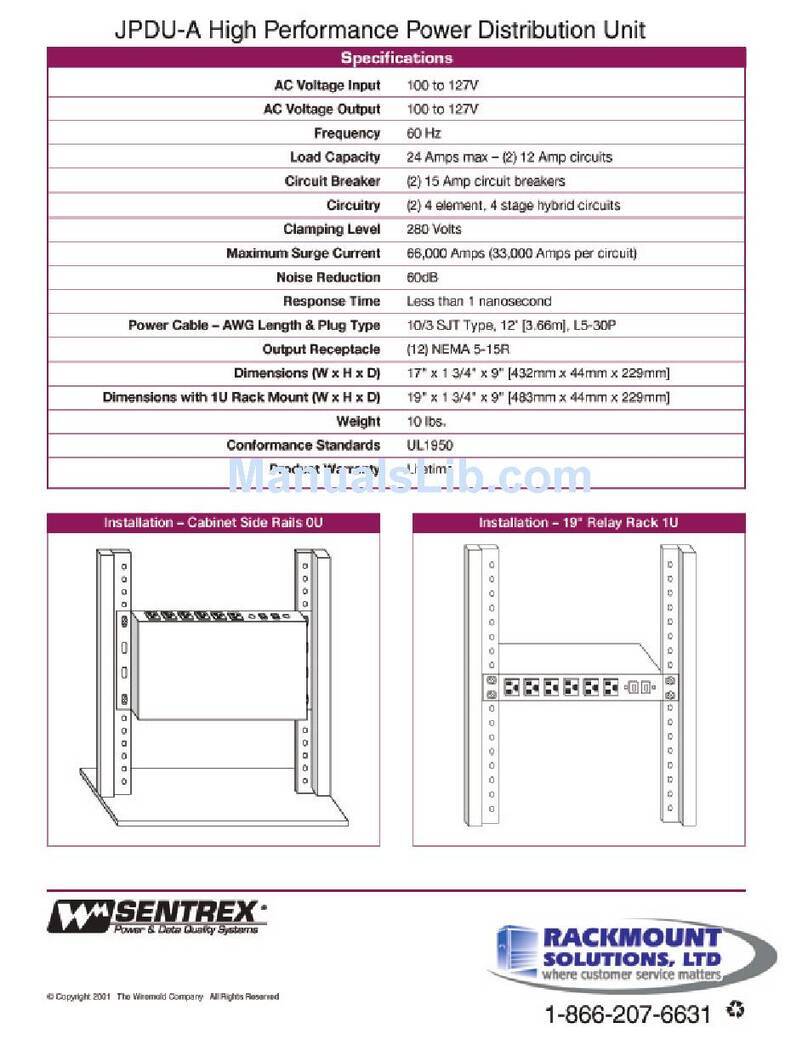
Rackmount
Rackmount JPDU-A Specifications
